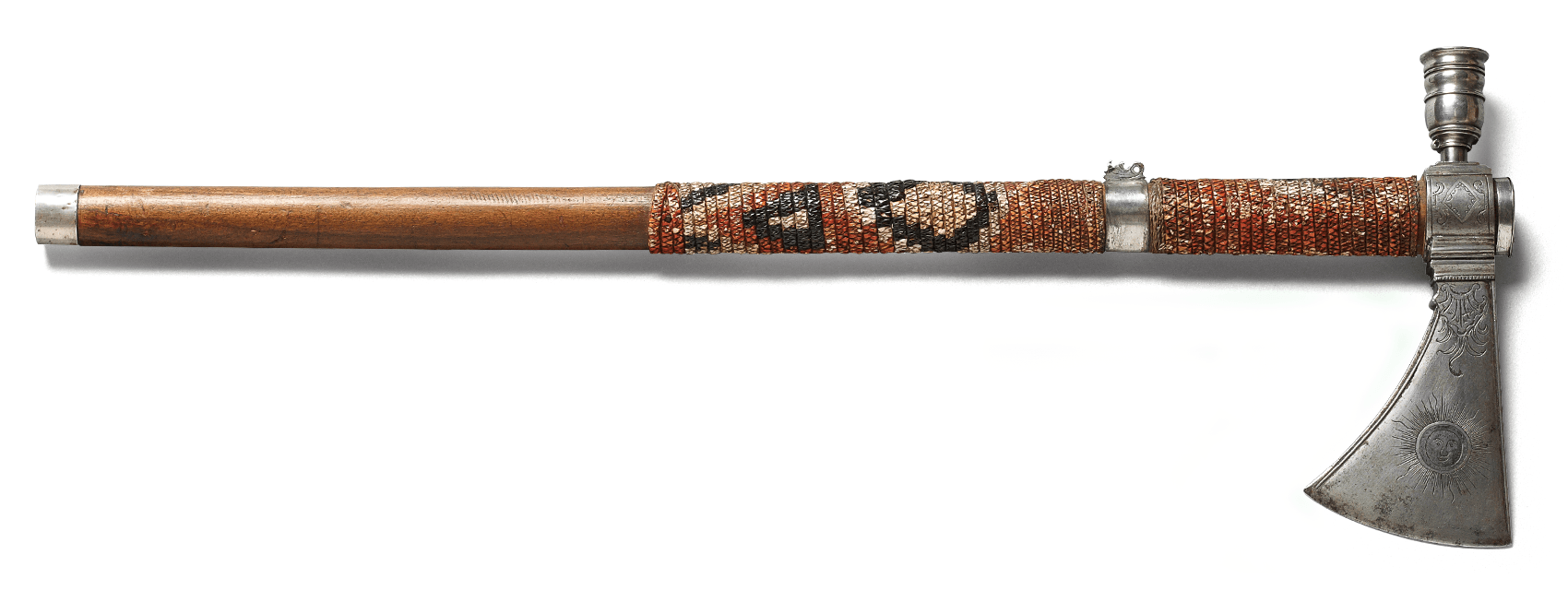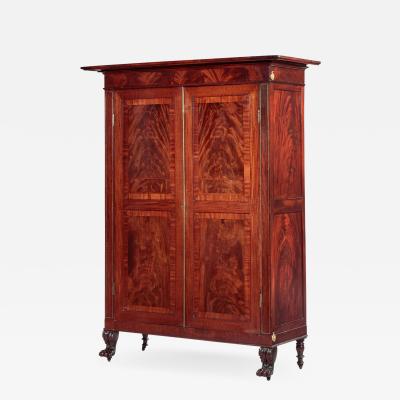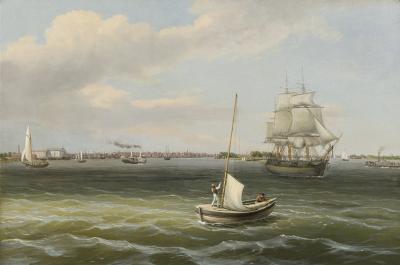The Butler-McClellan Pipe Tomahawk
As good as it gets!
Fort Pitt (Pittsburg), Pennsylvania, circa 1770
Metalwork and handle attributed to Richard Butler
Inscribed “R. Butler” and “Lt. J. Maclellan”
Iron, cherry, steel, silver, pewter, and porcupine quills
Shaft: 21⅛ inches; blade and pipe: 7¼ inches
Sold to a private collector
Image courtesy Kelly Kinzle Antiques, New Oxford, PA
The pipe tomahawk form is a true weapon of the frontier, combining a smoking pipe and a small ax. It is a uniquely American invention and among the prized possessions used in the Revolutionary War by American and English soldiers. Less than five percent of the surviving pipe tomahawks are marked or attributed. The extraordinary history of this example spans several centuries and great distances. It bore witness to key events in the early years of American history, including the long march to the Battle of Quebec during the Revolutionary War. It traversed the Atlantic as a war trophy, and returned to America as a treasured relic and artifact. It is the sole known example of the work of Richard Butler, an armorer and Indian trader based at Fort Pitt from 1765–1772. Butler was a Pennsylvania gunsmith turned Revolutionary War general, revered hero, and friend to George Washington and General Lafayette.
According to the curators at the Smithsonian National Museum of the American Indian, the quillwork is representative of wrapping that occurred throughout the Plains and the Prairies, and is most likely the work of the Shawnee tribes with which Butler traded. The quality of the blade, pipe and decoration excludes the possibility that the tomahawk itself was ever intended for the Indian trade and indicates it was made as a gift or custom order. It is in fact known that Butler made the tomahawk for John McClellan (1751–1775), a young farmer from the Juniata Valley who was commissioned for service in the Revolutionary War at the age of 24. The pipe tomahawk’s history is involved and fascinating; those interested in learning more may contact the gallery.
































